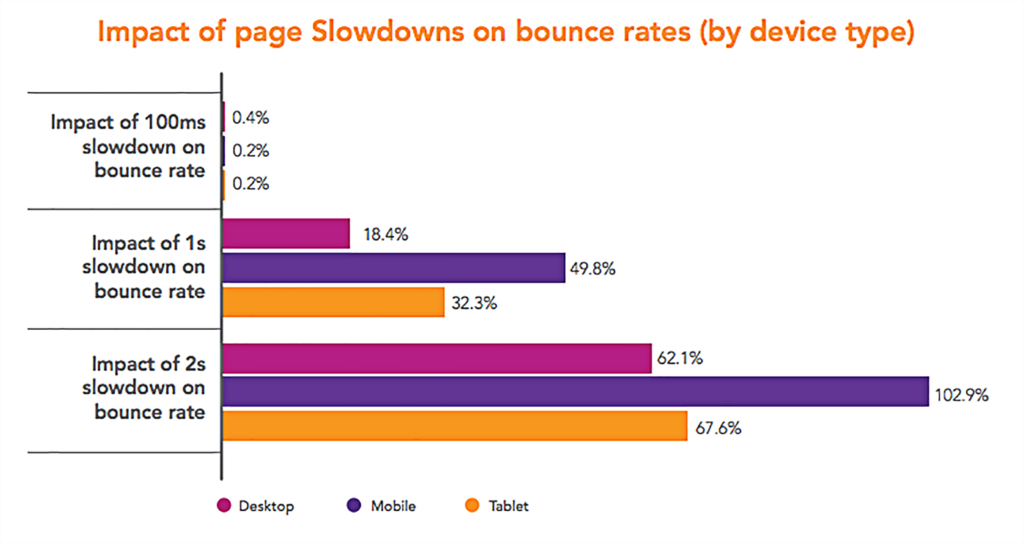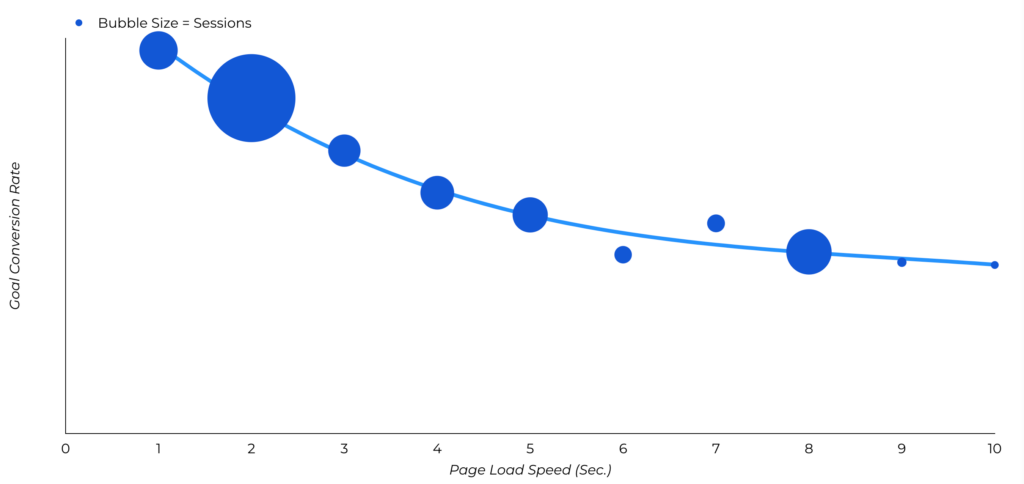Facts About Website Page Speed Uncovered
Table of ContentsWebsite Page Speed Fundamentals ExplainedIndicators on Website Page Speed You Need To KnowEverything about Website Page SpeedExcitement About Website Page Speed
Latency is the amount of time it considers a packet of data to get from one factor to another. There is latency between the time it takes a host server to get and also process a demand, as well as latency in between the server sending out a property back and also an internet browser receiving it.
On a common USA desktop utilizing Wi, Fi, a demand's typical big salami takes just 50 nanoseconds. This is the time it takes for a browser to send a request as well as the server to send a reaction over the network. On a mobile network, round-trip time can be even more than 300 nanoseconds.
Add the round-trip time for each and every demand it takes to fill your site for time it requires to initially establish a radio channel with the network (possibly 1,000 to 2,000 nanoseconds), and you can see exactly how mobile network efficiency directly impacts your site's user experience. Better, it's tough to forecast when wireless networks may be unstable due to variables like an individual going to a jampacked event or in an area with bad reception.
Website Page Speed Fundamentals Explained
This is evidenced by a variety of firms' research studies. My group at Etsy found an enhanced bounce rate of 12% on mobile phones when we added 160 KB of covert images to a page. Dual, Click, a Google advertisement item, eliminated one client-side redirect as well as saw a 12% rise in click-through rate on mobile phones.
Your site's user experience will be influenced by page load time, regardless of the kind of tool used to access it. However, a negative individual experience as a result of slow tons times will certainly be intensified if your customer is on a mobile phone, thanks to poorer network rates as well as the different habits that mobile users exhibit.
Desktops, on the Find Out More other hand, are utilized for more significant or research-intensive tasks. According to the research, smartphones are the most common starting area for the following online tasks: Searching for certain info Surfing Buying Social networking As you create a site, take into consideration exactly how quickly users will certainly be able to complete jobs like these offered the amount of time they intend to spend on their gadget in this sitting, and how dramatically their mobile network might impact their ability to do so.
Your style ought to be intuitive and also very easy to use, as well as it ought to additionally end up being interactive as quickly as possible, despite the platform. Additionally, even when utilizing Wi, Fi on a mobile, the customer will likely have a slower experience because of antenna size and result power. Wi, Fi can take advantage of greater than one antenna each read what he said time to send as well as get signals; nonetheless, most mobile phones aren't set up to make use of the multipath modern technology.
Little Known Questions About Website Page Speed.
Mobiles likewise attempt to be reliable with battery power (which is a huge part of the smart device user experience), and also one means for them to save power is by limiting the outcome of their radio. Desktop computers don't run on battery power, so they are able to utilize Wi, Fi without making the same adjustments to Wi, Fi strength.
Numerous of the optimizations that boost web page tons time likewise enhance tool energy intake, more enhancing the individual experience. Points like Wi, Fi great post to read signal stamina, Java, Manuscript providing, and also rendering of pictures all effect battery drainpipe on mobile gadgets. The lower line is that your efforts to optimize your site have an effect on the whole experience for your individuals, including battery life.

The smart Trick of Website Page Speed That Nobody is Talking About
You might concentrate on maximizing style as well as design, yet those can come at the cost of page rate. Some responsively created sites are reckless with the amount of markup and also images utilized to reformat a website for smaller sized display dimensions; they can unwittingly require their individuals to download and install unnecessary sources.
Believe about your most current design. How lots of various typeface weights were used? Just how lots of images did you make use of? Exactly how huge were the photo files, and what documents formats did you utilize? Just how did your style impact the prepare for markup as well as CSS structure? The choices made by developers are what generally drive the remainder of how a web site is constructed.
To show this, allow's claim we have an example logo that we are intending to overlay on a div with a light blue history, as displayed in Number 1-3. Figure 1-3. This instance logo design has a transparent history, as well as will be overlaid on a div with a light blue history.